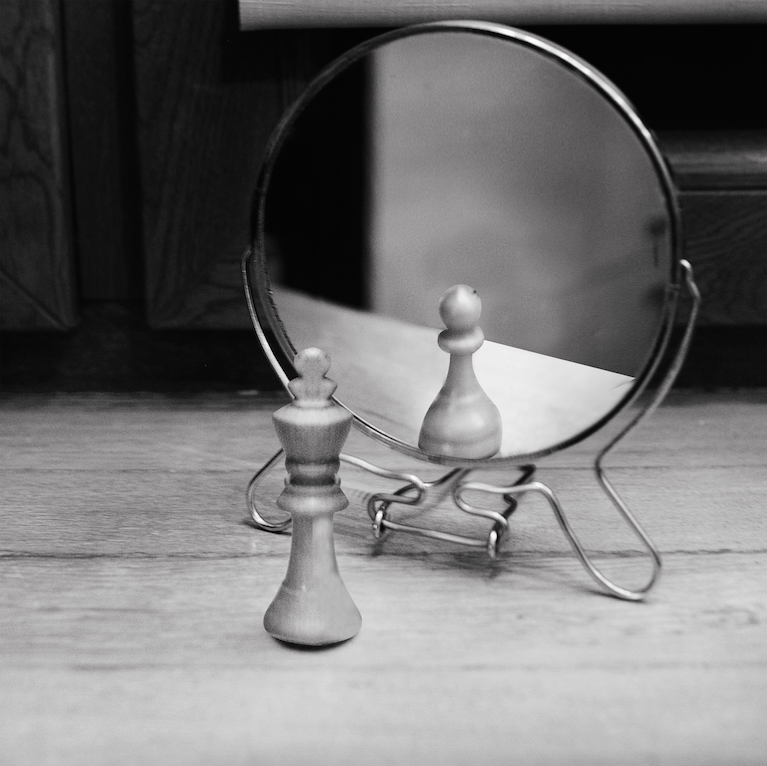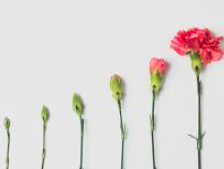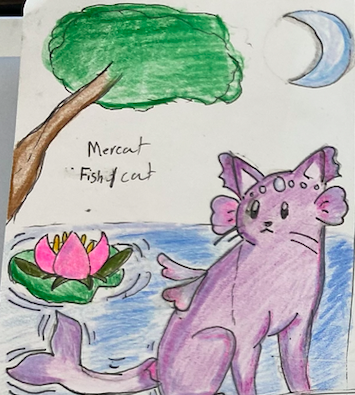 Here at Honoka’a High school in the Academy of Industry, one the career pathways students can follow is Digital Design offered by Mr. Douglas McDowell. The student designers have the opportunity to learn many graphic design techniques, including digital design and silk screening. Some of the products they have created are our academy logos, the jazz band CD covers and graphics and printing for club t-shirts. Creating these products can be complicated and often entails multiple steps and a steep learning curve. The Dragon Post interviewed Mr. McDowell about the fun and challenging t-shirt printing process.
Here at Honoka’a High school in the Academy of Industry, one the career pathways students can follow is Digital Design offered by Mr. Douglas McDowell. The student designers have the opportunity to learn many graphic design techniques, including digital design and silk screening. Some of the products they have created are our academy logos, the jazz band CD covers and graphics and printing for club t-shirts. Creating these products can be complicated and often entails multiple steps and a steep learning curve. The Dragon Post interviewed Mr. McDowell about the fun and challenging t-shirt printing process.
DP: Hello my name is Kalena Blode and I’m here to interview Mr. McDowell for the T-shirt printing process
Mr. M: Thanks for having me.
DP: Alright so tell us about the T-shirt printing project you and your students have been doing?
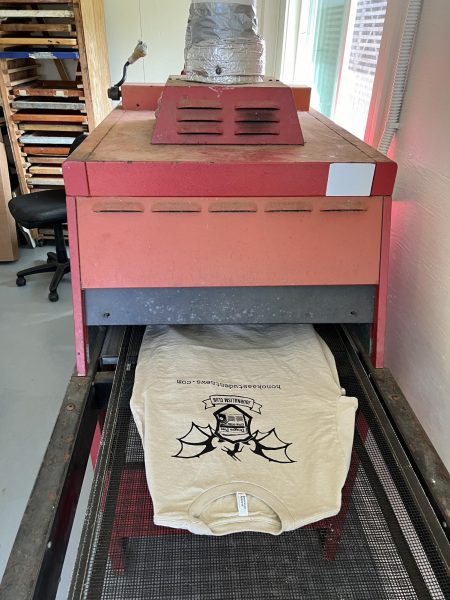 Mr. M: Oh thanks for asking. So this year we have opened a new silk screen shop at Honokaa High. The screen shop is located up the hill outside of building N2 computer lap. This year we took on a few clients to work with in our new screen shop. Our new screen printing project was for Mr. Washburn Jazz band program and we did 82 jazz band t-shirts. The second one we did was the Journalism club and we invented a new logo, transferred that to screen, and printed for their journalism club.
Mr. M: Oh thanks for asking. So this year we have opened a new silk screen shop at Honokaa High. The screen shop is located up the hill outside of building N2 computer lap. This year we took on a few clients to work with in our new screen shop. Our new screen printing project was for Mr. Washburn Jazz band program and we did 82 jazz band t-shirts. The second one we did was the Journalism club and we invented a new logo, transferred that to screen, and printed for their journalism club.
DP: Mhm that’s good! So tell me what the process was like?
Mr. M: Oh, well the process is very sequential. There are multiple steps that the students and I have to go through in order to develop the artwork and process the screen and then print the shirts.
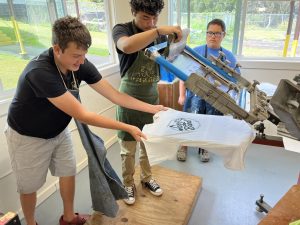 I forgot to mention one of the other projects we’re also doing the hui nut macadamia nut where we have a collaboration amongst multiple career and technical education programs, CTE, where the business club is doing the business plan, the culinary club is doing recipes with macadamia nuts, the natural resources club are harvesting and processing the mac nut, and then the design club is coming up with a logo and making shirts for it so that’s our next project, but as for the process, I’d love to share with you the sequence. Can I do that?
I forgot to mention one of the other projects we’re also doing the hui nut macadamia nut where we have a collaboration amongst multiple career and technical education programs, CTE, where the business club is doing the business plan, the culinary club is doing recipes with macadamia nuts, the natural resources club are harvesting and processing the mac nut, and then the design club is coming up with a logo and making shirts for it so that’s our next project, but as for the process, I’d love to share with you the sequence. Can I do that?
DP: Of course!
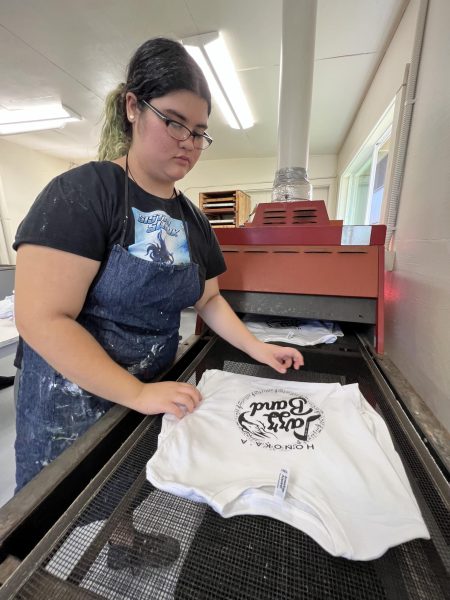
Mr. M: Okay great. So the first thing we do in the classroom, if we don’t have a logo that’s provided for us from a client, we have to go through the making of the artwork. In order for the students to do that, well the students have to understand who the client is and we do that by creating empathy and we help the client to understand the identity of the client, the target audience for that client. The we render a variety of different logos or artwork for that client. Then we do like revision and get feedback. Once we’ve finalized the design, then we have to put it onto a screen and we use a photographical motion on a silk screen and then print their artwork on clear transparency. We expose the screen with the transparency to light and it works like a photograph like an old school photograph where the blocking out of the light keeps the emotion soft in some areas while the light hardens the emotion in other areas. Then we use a sink to wash out the screen which opens up the screen in the areas that will let the ink pass through. Once the screen has been built, we then register it onto the shirts and line it up properly and then we open up the screen with the ink and start using our squeegee to print through the screen our designs onto the shirts. Once it’s printed on the shirt, it’s wet and it has to be put into a dryer. We have a conveyor belt dryer that sends the shirts through in a very mass reproduction kind of way. We then dry the shirts and we cure them twice so it sets the ink then we set them up for distribution and then send it off to the client. 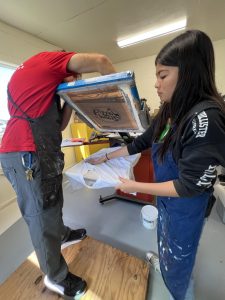
DP: Mm that’s very good. So tell me what is your most favorite part of all this?
 Mr. M: I think it’s the beginning and the end. I love getting to know new clients and learning about organizations and people that are outside of design like I love working with natural resources. I love working with different organizations in our community so it’s exciting to learn about other groups so I enjoy that part. Then when I’m learning about them and the students and I are working at that, the alignment of design to their needs is something I like to do. It’s really hard work to figure out the right shapes and fonts and colors for the target, but I love that alignment. There’s a lot of ideation that goes into it and then I love the end when it’s done. It’s very… It’s very rewarding and the students can kind of celebrate their achievement.
Mr. M: I think it’s the beginning and the end. I love getting to know new clients and learning about organizations and people that are outside of design like I love working with natural resources. I love working with different organizations in our community so it’s exciting to learn about other groups so I enjoy that part. Then when I’m learning about them and the students and I are working at that, the alignment of design to their needs is something I like to do. It’s really hard work to figure out the right shapes and fonts and colors for the target, but I love that alignment. There’s a lot of ideation that goes into it and then I love the end when it’s done. It’s very… It’s very rewarding and the students can kind of celebrate their achievement.
DP: That’s good to know! Well thank you for this wonderful interview and that’s all for this interview. If you’re interested come on down to Mr. McDowell’s room.
Mr. M: Haha thanks for coming here to interview me.




